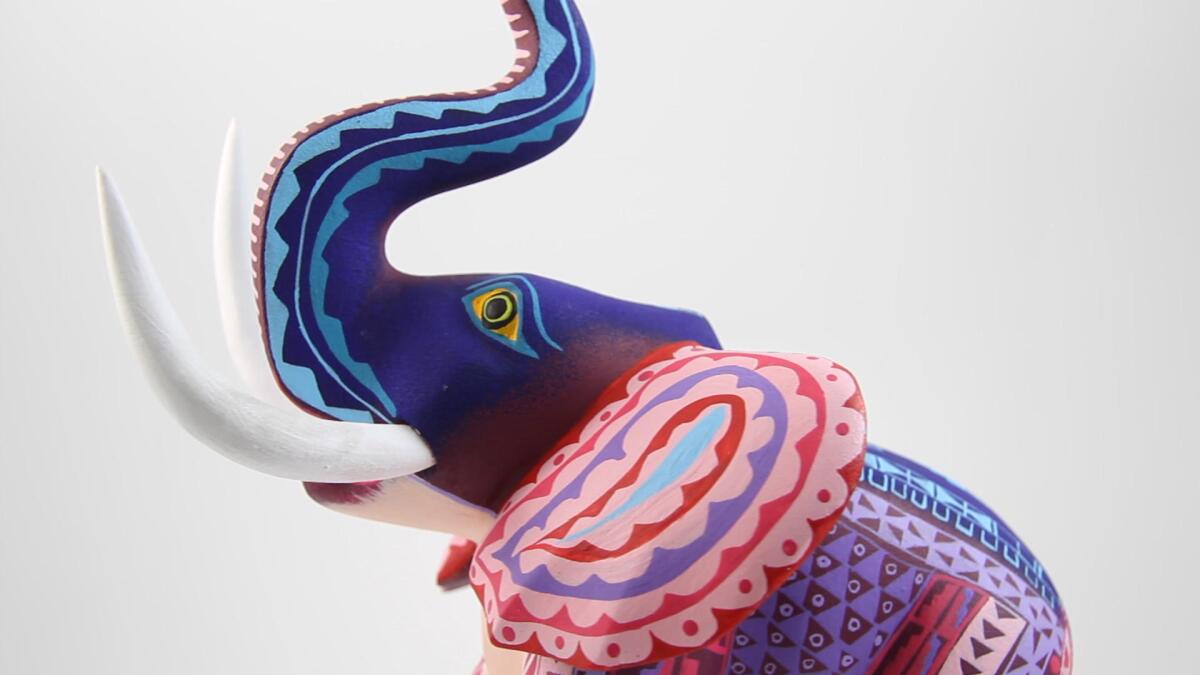How Mexican folk artist Pedro Linares’s fever dream led to the magical animals ‘alebrijes’

To walk down La Placita Olvera in downtown Los Angeles is to take a deep dive into a cornucopia of color: Vibrant lucha libre masks and decorative Day of the Dead skulls line the shops. And then there are alebrijes.
They escape easy definition. Donkeys with butterfly wings, roosters with bull horns, turtles with stars for eyes — alebrijes appear to have come out of a Salvador Dalí dream or a Gabriel García Márquez novel. Most scholars credit these magical hybrid animals to Pedro Linares, an artist in Mexico City who, after having fallen ill, dreamed these fantastical creatures.
"I saw them in a dream," he told The Times a month before he died. "They were very ugly and terrifying and they were coming toward me. I saw all kinds of ugly things."

Buyers had as much an influence on how alebrijes looked as Linares did. The more vibrant they became, the more buyers they had. Their look evolved to meet demand.
"People didn't want to buy the alebrijes. They were too ugly," he said. "So I began to change them and make them more colorful."
Despite the changes, the folk art still reflects an indigenous culture.
"You have these impulses in Mexican traditional art forms of folks working out wild animals and amazing creatures," says Patrick Polk, curator of Latin American and Caribbean popular arts at the Fowler Museum in L.A. "There's connections that go back to pre-Columbian-like aesthetics and ideas of the supernatural. There's deep, deep roots.”

For Sergio Aragon, creating them is also about staying in touch with his family. An insurance agent in Sun Valley, Aragon spends his weekend making alebrijes. He speaks to his family back home in Arrazola, a town in Oaxaca state where his wife and sons help to carve, sand and apply the first layer of paint. The finished pieces may carry a single signature, Aragon says, but there’s often a family behind the work.
"You are supporting the person who brings the wood, the person who sands the alebrijes, the person who sells the paint,” Aragon says. “You are supporting not only the artist. It's a lot of people."
Aragon learned how to make alebrijes using a knife and acrylic paint from his older brother. It's one of the practices from his culture that he has passed on to his children.

Alebrijes can be seen around Southern California at such places as the Folk Tree in Pasadena and Casa California in La Placita Olvera.
“It’s the most authentic, the most true art of the Mexican people,” says Manuel Aguilar, professor of art history at Cal State Los Angeles. “It is the spirit of the artist that is embedded in those pieces.”
The spirit of those pieces has helped to define the long woodcarving culture in Oaxaca, where alebrijes have become a regional tourist attraction, Polk says. But don't get stuck on the physical object. For Polk, the magic of alebrijes is in the process.
"The ability of the artist to conjure things that move out of the mind, to present the fantastic. To challenge folks. To make sense out of it and revel in the creativity. The ability to fashion the fantastic,” Polk says. “These creatures break those boundaries."
ALSO:
At Hammer Museum's 'Made in L.A.' biennial, Martine Syms makes her moment
Follow @stevesaldivar on Instagram
The biggest entertainment stories
Get our big stories about Hollywood, film, television, music, arts, culture and more right in your inbox as soon as they publish.
You may occasionally receive promotional content from the Los Angeles Times.








